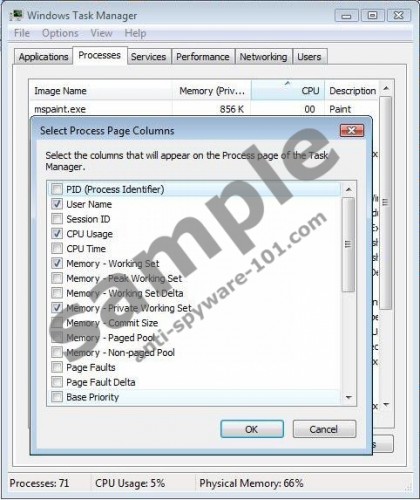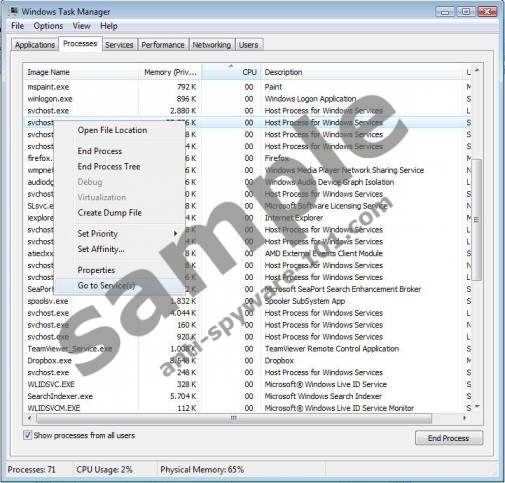What is Speed Up Computer Using Task Manager?
How Task Manager Can Make Your PC Run Faster
The Windows Task Manager can be a remedy for your computer, because it can rebuild your PC’s performance and increase its speed. If you learn more about this tool, you can effectively apply it to solve your computer’s problems, especially if your operation system is Windows Vista or Windows 7. Task Manager will assist in monitoring and boosting performance of the system.
If you want to increase the speed of the computer and check for registry issues automatically, you can use a registry diagnosis tool, but if you want to acquire knowledge of how you can detect and solve problems related to your system with the help of Task Manager, follow our manual guide.
You will make your computer run faster if you apply the recommendations presented.
1. Find Processes and Check Programs Using the Most Memory
The Windows Task Manager is opened by pressing the Ctrl+Alt+Del combination. The top tab that you see as you open the tool is Applications, which shows what applications you have launched.
To view the processes that are running in the system:
- Select the Processes tab and then click on Show processes from all users.
- If you find an unfamiliar process, right-click on it and select Properties.
- The Properties tab will show the location of the folder in which the process is and the date of its creation.
- If you do not know which processes have to be removed or stopped, carry out a quick research on the Internet to find more information on them.
2. Stop a Process that Decreases Your Computer Performance
If a process causes high CPU usage, most of the time, it is responsible for a computer’s slow performance. You can deal with the issue by using the Task Manager. What you should do is:
- Open your Task Manager (Ctrl+Alt+Del). As a given process’ CPU usage might be of the highest degree, you might have to wait for the tool to open.
- Select Processes, click View and then again click Select Columns. If the column does not appear, then check CPU. If you want to terminate that process which increases the CPU usage, right-click it and click on the End Process option.
Keep in mind the fact that the system might crash after ending the process. This might occur to you if the process is a “system critical” process. If you have data which should be kept on the computer, you should slow down the process that is having most of the CPU usage so that you can use other programs and protect the data. To slow down a process, follow the guide below:
- Find the process, right-click it, click on Set Priority and select Low. The process is not stopped, but you should get sufficient power to perform actions related to saving your data.
- In case of further problems, instead of Set Priority select Set Affinity. In this case, the CPU cores can be set, and if you success in emptying a core, it should be sufficient to run the needed processes.
3. Monitor Processes Related to the Windows Resources
Some problems might arise due to limited Windows resources if a process is using too many of them. In this case, Task Manager helps you follow what resources are used.
- Select the Processes tab,
- Click View and then select Columns.
- Check Handles, User Objects and GDI Object. Click OK.
- Regularly check the figures, because certain resources might be used by processes but not emptied afterwards. If the resources are continually used in this manner, you should take some measures.
- Other figures which you should also note are approached below.
4. Increase Your Computer’s Speed by Emptying RAM Space
If your RAM is being misused, you should discover how it is wasted. Once you cleanse the RAM memory, your computer should start performing faster. Task Manager can be used to view processes misusing your RAM.
Open the Processes tab, select View, Select Columns, and then select Memory – Working Set and Memory – Private Working Set to find how the RAM memory is used.
- Memory – Working Set. It indicates how much of the physical memory every process is consuming at that point. The information presented should not be regarded as completely correct due to the fact that some processes can be sharing RAM, which leads to inaccurate presentation of each process.
- Memory – Private Working Set. It presents the amount of memory used by a single process. As the information presented usually does not show the exact amount of the memory, it is advisable to look at both sets to define the use of RAM.
To find which processes are using the most of RAM memory and which are to be closed, click on, for example, Memory (Private Working Set) so that you can get the largest values listed on the top.

5. Analyze Svchost.exe Processes to Diagnose High RAM Usage
The Svchost.exe is found among processes listed the Process tab when the Show processes from all users option is checked. There are several svchost.exe processes displayed. The name of the process is a common name for services that are responsible for supplying support Window operations.
To find more about svchost.exe services, right-click a particular svchost.exe process and click on the Go To Services option. You will find highlighted services which are administered by the selected processes. This allows you to view whether the selected process related to immoderate RAM usage.

6. Stop Hard Drive Breakdowns
A breakdown of your computer might occur due to excessive usage of hard drive, because its memory is not limitless. When the amount of memory resources is not sufficient, the system might stop running properly. Task Manager, in this case, shows you the processes that can throw the system into disorder.
- Open the Processes tab
- Click View and click on the Select Columns option.
- Check I/O Read Bytes and I/O Write Bytes, and select OK.
- The two columns that you find presents information about the network activity and your hard drive.
- The biggest figures stand for the most active processes, and processes that will be changing at a given time.
7. Can't double click, and open anything?
Task Manager can help you to start computer programs which cannot be launched by double-clicking on them. The process might be running even if you do have its window opened on the screen. If an in-memory copy of the program is blocked, even after the restart of the program it might not open.
If, for example, Internet Explorer does not open, open your Task Manager and find the iexplorer.exe process. If you succeed in finding it, end the process by selecting the End Process option. In this way, the program is closed without errors, and you can try to re-launch the program.
The End Process option should not be used to stop every process you think should be stopped. If a “system critical” process is ended, the system might crash or lock up your computer. Hence, before ending the process, be certain that you are stopping the right process.
More Task Manager Tweaks: Speed Up Computer Using Task Manager Part 2
In order to speed up your computer, use a registry cleaner to find out why the computer is not operating properly. A reliable registry cleaner will find and remove registry entries that are no longer useful, which will result in better performance of the computer.




How to speed up a computer is one of the subject discussed on the net.
Apart from what you say here, it is very helpful tip by the way, to speed up a computer having enough space on hard disk, defraging hard drive, limiting start up programs and using registry cleaner are also important methods.
thanks again
Hey Hawareyaw ,
Thank's for really good words!!
Nice Post about Computer Speedup
Thanks Alice!
There are many ways through which a person can speed up the computer. Task manage is one of them. Task manager is important just to increase the speed. Apart from that if you download registry cleaner, then this would also help you a lot.